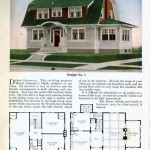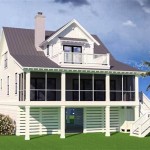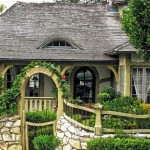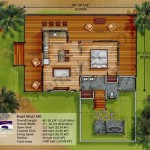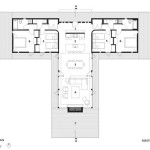Tiny House Design Plans are blueprints that guide the construction of compact homes, typically measuring under 400 square feet. These plans outline every aspect of the house’s design, from its floor plan and electrical wiring to its plumbing and insulation. Tiny house enthusiasts use them to create customized, space-efficient dwellings that maximize every square foot. An example of a successful tiny house design plan is the “Vista Grande”, which features a clever loft space and a compact kitchen with all the essential appliances.
The popularity of tiny house design plans has surged in recent years, driven by various factors such as affordability, environmental consciousness, and the desire for a simpler lifestyle. These plans offer a multitude of benefits. They provide a cost-effective housing solution, reduce energy consumption, and promote sustainability. By utilizing every square foot wisely, tiny house design plans create highly functional and comfortable living spaces that cater to individuals seeking a life with less clutter and more purpose.
In the following sections, we will delve deeper into the world of tiny house design plans, exploring their advantages, discussing various design options, and providing guidance on selecting and implementing the perfect plan for your dream tiny house.
Tiny house design plans offer a multitude of benefits and considerations. Here are eight important points to keep in mind:
- Maximize space efficiency
- Reduce construction costs
- Promote sustainability
- Facilitate a simpler lifestyle
- Provide flexibility in design
- Cater to various needs
- Encourage creativity
- Enable responsible living
These points highlight the advantages and versatility of tiny house design plans, making them an attractive option for those seeking affordable, sustainable, and space-conscious living solutions.
Maximize space efficiency
Tiny house design plans prioritize space efficiency as a core principle. Every square foot is meticulously utilized to create a functional and comfortable living space. This is achieved through clever design techniques such as:
- Multi-purpose furniture: Furniture pieces serve multiple functions, such as a sofa that converts into a bed or a coffee table with built-in storage.
- Vertical storage: Shelves, drawers, and cabinets are installed vertically to maximize vertical space and minimize floor space usage.
- Loft spaces: Lofts are created to provide additional sleeping or storage space without increasing the footprint of the house.
- Built-in appliances: Appliances are built into cabinetry or walls to save space and create a sleek, integrated look. li>
Smart storage solutions: Creative storage solutions, such as under-bed drawers, magnetic knife strips, and over-the-door organizers, are employed to maximize every nook and cranny.
By implementing these space-saving techniques, tiny house design plans ensure that every square foot is utilized to its full potential, creating a comfortable and functional living environment despite the compact size.
Additionally, tiny house designs often incorporate open floor plans to create a sense of spaciousness. Walls are minimized, and the kitchen, living room, and dining areas flow seamlessly into one another. This open layout enhances the feeling of space and allows for a more efficient use of available square footage.
Furthermore, tiny house design plans emphasize natural light to make the space feel larger and more inviting. Windows are strategically placed to maximize daylight and reduce the need for artificial lighting. Skylights can also be incorporated to bring in additional natural light, creating a brighter and more cheerful living environment.
Reduce construction costs
Tiny house design plans are renowned for their ability to reduce construction costs significantly. This cost-effectiveness stems from several key factors:
- Smaller size: The compact size of tiny houses requires less building materials, labor, and land, leading to lower overall construction costs.
- Simplified designs: Tiny house designs often feature simple, straightforward layouts with minimal ornamentation, reducing the need for complex construction techniques and expensive materials.
- Fewer materials: The smaller size and simplified designs of tiny houses result in a reduced need for materials such as lumber, drywall, and roofing, further lowering construction costs.
Furthermore, tiny house design plans often incorporate sustainable and cost-effective building practices. For example, the use of recycled materials, energy-efficient appliances, and passive solar design can reduce construction costs while also promoting environmental sustainability.
Additionally, the construction of tiny houses can often be completed by do-it-yourselfers or small construction crews, further reducing labor costs. With careful planning and execution, it is possible to build a tiny house for a fraction of the cost of a traditional home.
Overall, the compact size, simplified designs, reduced material requirements, and sustainable building practices employed in tiny house design plans contribute significantly to their cost-effectiveness, making them an attractive option for budget-conscious individuals and families.
Promote sustainability
Tiny house design plans actively promote sustainability through various design elements and construction practices. By embracing sustainability, tiny houses minimize their environmental impact and contribute to a greener future. Here are four key ways in which tiny house design plans promote sustainability:
- Reduced resource consumption: The compact size of tiny houses inherently leads to reduced resource consumption during construction and throughout their lifespan. They require less building materials, energy, and water compared to larger homes, conserving precious natural resources.
- Energy efficiency: Tiny house designs prioritize energy efficiency to minimize their environmental impact. They often incorporate energy-efficient appliances, insulation, and passive solar design principles to reduce energy consumption and reliance on fossil fuels.
- Sustainable materials: Many tiny house design plans emphasize the use of sustainable and recycled materials, such as reclaimed wood, bamboo, and recycled steel. These materials have a lower environmental impact than traditional building materials, reducing the carbon footprint of tiny houses.
- Off-grid capabilities: Some tiny house design plans incorporate off-grid systems, such as solar panels and rainwater harvesting systems, to reduce their reliance on conventional energy sources and municipal infrastructure. This promotes sustainability by minimizing the environmental impact associated with energy production and water consumption.
In addition to these key points, tiny house design plans often encourage sustainable living practices. The compact size and efficient use of space promote a minimalist lifestyle, reducing consumption and waste. Rooftop gardens and composting systems can also be incorporated to enhance self-sufficiency and reduce the environmental impact of food production.
Overall, tiny house design plans play a significant role in promoting sustainability by reducing resource consumption, emphasizing energy efficiency, utilizing sustainable materials, and encouraging off-grid capabilities. By embracing these principles, tiny houses contribute to a greener and more sustainable future.
Facilitate a simpler lifestyle
Tiny house design plans are thoughtfully crafted to facilitate a simpler lifestyle, encouraging individuals to declutter their lives and focus on what truly matters. Here are four key ways in which tiny house design plans promote simplicity:
- Reduced space: The compact size of tiny houses naturally encourages a minimalist lifestyle. With limited space available, residents are forced to carefully consider their belongings and choose only the essentials. This process of decluttering can be incredibly liberating, freeing individuals from the burden of excess possessions and fostering a greater appreciation for the things they truly value.
- Simplified routines: The efficient layouts and clever storage solutions found in tiny house design plans streamline daily routines and reduce the time spent on household chores. Everything has a designated place, making it easy to maintain a clean and organized living space. This simplified approach to daily life can free up time for more meaningful activities and pursuits.
- Less maintenance: Tiny houses require significantly less maintenance compared to larger homes. With fewer rooms to clean, less outdoor space to maintain, and smaller systems to upkeep, residents can enjoy more free time and reduce the burden of homeownership. This allows them to focus on activities they enjoy, spend more time in nature, or simply relax and recharge.
- Increased mobility: Tiny houses offer a level of mobility that is unmatched by traditional homes. Many tiny houses are built on trailers, making them easy to transport and relocate. This mobility provides the freedom to live in different locations, experience new environments, and pursue a more flexible lifestyle.
In addition to these key points, tiny house design plans often incorporate features that promote mindfulness and well-being. Natural light, open floor plans, and cozy spaces create a calming and restorative environment. Residents can enjoy the simplicity of living in a space that is tailored to their needs and values, fostering a greater sense of contentment and fulfillment.
Overall, tiny house design plans facilitate a simpler lifestyle by encouraging minimalism, streamlining routines, reducing maintenance, increasing mobility, and promoting well-being. By embracing these principles, tiny houses empower individuals to live more intentionally and focus on what truly matters.
Provide flexibility in design
Tiny house design plans offer a remarkable degree of flexibility in design, allowing individuals to tailor their homes to their unique needs, preferences, and lifestyle. This flexibility stems from several key factors:
- Modular construction: Many tiny house design plans utilize modular construction techniques, which involve building the house in sections that can be easily assembled and reconfigured. This modularity allows for a wide range of design possibilities and makes it easy to modify the layout or add additional modules in the future.
- Customizable floor plans: Tiny house design plans often provide multiple floor plan options to choose from, or they allow for complete customization to suit the specific needs of the homeowner. This flexibility ensures that individuals can create a space that perfectly aligns with their desired lifestyle and spatial requirements.
- Adaptable spaces: Tiny house design plans incorporate adaptable spaces that can serve multiple functions. For example, a loft area can be used as a sleeping space, a home office, or a storage area. This flexibility allows homeowners to maximize the functionality of their tiny homes and create spaces that can easily adapt to changing needs.
- Expandable designs: Some tiny house design plans include expandable features, such as slide-outs or pop-outs, which can increase the living space when needed. This expandability provides the flexibility to accommodate guests, create additional storage, or simply enjoy a more spacious living area.
The flexibility provided by tiny house design plans empowers individuals to create truly unique and personalized homes. Whether they desire a cozy retreat, a mobile adventure hub, or a sustainable off-grid sanctuary, tiny house design plans offer the versatility to bring their vision to life.
Cater to various needs
Accommodating Diverse Lifestyles
Tiny house design plans cater to the diverse lifestyles and needs of individuals and families. Whether someone desires a cozy retreat for solo living, a mobile home for adventure enthusiasts, or a sustainable sanctuary for eco-conscious individuals, tiny house design plans offer a range of options to suit every lifestyle. Some plans prioritize compact efficiency for minimalist living, while others incorporate expandable features or multiple floor plan options to accommodate growing families or frequent guests.
Adaptable to Different Locations
Tiny house design plans are adaptable to various locations and climates. Some plans are designed to withstand extreme weather conditions, making them suitable for off-grid living in remote areas. Others are designed to comply with urban building codes, allowing individuals to enjoy the benefits of tiny living in densely populated cities. Additionally, tiny house design plans can be modified to incorporate local materials and construction techniques, ensuring that the home blends seamlessly with its surroundings.
Customizable for Accessibility
Tiny house design plans can be customized to meet the specific accessibility needs of individuals with disabilities. Wider doorways, ramps, and accessible showers can be incorporated into the design to ensure that everyone can enjoy the benefits of tiny living. Universal design principles can be applied to create a home that is comfortable and functional for people of all abilities.
Sustainable and Eco-Friendly Options
Tiny house design plans often prioritize sustainability and eco-friendly living. They incorporate energy-efficient appliances, insulation, and renewable energy sources to minimize environmental impact. Some plans even include features like rainwater harvesting systems and composting toilets to promote self-sufficiency and reduce reliance on external resources.
In conclusion, tiny house design plans are incredibly versatile and adaptable, catering to the diverse needs of individuals and families. They offer a range of options to suit different lifestyles, locations, accessibility requirements, and sustainability goals. By carefully considering the specific needs and preferences of the homeowner, tiny house design plans can create truly personalized and functional living spaces.
Encourage creativity
Limitless Design Possibilities
Tiny house design plans provide a blank canvas for creativity to flourish. Unlike traditional house plans, which often come with predefined layouts and limited customization options, tiny house design plans offer a high degree of flexibility and freedom to explore unique and innovative designs. Homeowners can let their imaginations soar and create spaces that reflect their individual style and personality.
Compact and Efficient Layouts
The compact size of tiny houses forces designers to think creatively about space utilization. Every square foot must serve a purpose, leading to the development of ingenious and efficient layouts. Tiny house design plans often incorporate clever storage solutions, multifunctional furniture, and unique architectural features to maximize space and create a sense of spaciousness in a limited footprint.
Artistic Expression
Tiny house design plans are not just about functionality; they also provide an opportunity for artistic expression. Homeowners can choose from a wide range of exterior finishes, interior decor, and custom features to create a tiny house that is both aesthetically pleasing and reflective of their personal style. From vibrant colors and bold patterns to natural materials and sustainable elements, tiny house design plans encourage homeowners to showcase their creativity in every aspect of their home.
DIY and Customization
Many tiny house design plans are designed to be built by do-it-yourselfers or small construction crews. This hands-on approach allows homeowners to customize every detail of their tiny house, from the layout and materials to the finishes and fixtures. By actively participating in the construction process, homeowners can bring their vision to life and create a truly unique and personalized living space.
In conclusion, tiny house design plans encourage creativity by providing limitless design possibilities, fostering compact and efficient layouts, offering opportunities for artistic expression, and empowering homeowners with DIY customization options. They invite individuals to think outside the box, embrace their individuality, and create tiny homes that are both functional and inspiring.
Enable responsible living
Promote sustainability
Tiny house design plans prioritize sustainability by incorporating energy-efficient appliances, insulation, and renewable energy sources. This reduces the environmental impact of tiny houses and promotes responsible living. By consuming less energy and relying on renewable resources, tiny house dwellers can contribute to a greener and more sustainable future.
Reduce waste and consumption
The compact size of tiny houses naturally encourages a minimalist lifestyle, reducing waste and consumption. With limited space available, tiny house dwellers are forced to carefully consider their belongings and choose only the essentials. This process of decluttering can lead to a more sustainable and fulfilling lifestyle, as individuals learn to appreciate the value of experiences over material possessions.
Foster self-sufficiency
Tiny house design plans often incorporate features that promote self-sufficiency, such as rainwater harvesting systems and composting toilets. These features reduce reliance on external resources and utilities, empowering tiny house dwellers to live more independently and sustainably. By generating their own water and managing their own waste, tiny house dwellers can minimize their environmental footprint and contribute to a more sustainable community.
Encourage local and sustainable sourcing
Tiny house design plans can be adapted to incorporate local and sustainable materials and construction techniques. By using materials that are sourced from the local area, tiny house dwellers can reduce their carbon footprint associated with transportation and support the local economy. Additionally, sustainable construction techniques, such as using recycled materials and energy-efficient building methods, further minimize the environmental impact of tiny houses.
In conclusion, tiny house design plans enable responsible living by promoting sustainability, reducing waste and consumption, fostering self-sufficiency, and encouraging local and sustainable sourcing. By embracing these principles, tiny house dwellers can create homes that are not only comfortable and functional but also contribute to a greener and more sustainable future.









Related Posts


